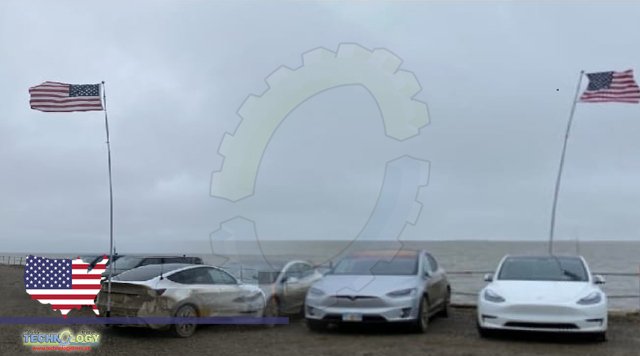Electric vehicles Tesla Model S, 3, X, Y, along with Rivian, Ford F150 Lightning, and Hummer EV, demonstrated themselves in the Alaska rally, showing that neither cold nor off-road can diminish driving pleasure. The goal of this project is to demonstrate the feasibility of using electric vehicles in a remote, harsh environment with low infrastructure.

Owning an electric car is associated with many fears, which affect the speed of their adoption. Tesmanian the result of an Alaska rally featuring a Model X Long Range, a refreshed Model S Long Range, two Model Y Long Range cars, a Model 3 Long Range, three Rivians, a Ford F150 Lightning, and a Hummer EV. The rally was part of the “Electrifying the Last Freeway” project, which was initiated by a group of Alaskan EV enthusiasts from ELFalaska.com and the Alaska Electric Vehicle Association with support from the Department of Energy (DOE) and Department of Transportation (DOT). The goal of this project is to demonstrate the feasibility of using electric vehicles in a remote, harsh environment with low infrastructure. In addition, the group continuously recorded the energy consumption of the vehicles in such conditions (gravel roads, steep inclines, etc.).
“The AKEVA initiative Electrifying the Last Freeway – provides critical support for the 2022 Arctic Road Rally, giving volunteer drivers the unique opportunity to travel the Dalton Highway to the Arctic Ocean for the first time ever in an electric vehicle,” the group said. The cars left on August 12 from Prudhoe and were due back in Fairbanks at Golden Valley Electric Association by August 16. The trip was 1,096 miles long. Andrei said that the Dalton Highway was built as an access road to support the Trans-Alaska Pipeline System in 1974. The road itself is mostly gravel, in some places very primitive, which increases the level of its danger. The nearest medical facilities are in Fairbanks and Deadhorse, so anyone traveling on the Dalton Highway is advised to bring their own survival gear. Because the location is so remote, telephone service is not available, so all participants had Garmin Inreach tracking devices, satellite phones, and some HAM equipment. The vehicles were rigged with telematics equipment (GPS + ODB connection). The data collected will be shared with the Department of Energy, which will evaluate the feasibility of installing a permanent fast-charging infrastructure in harsh remote locations. Andrei said that most driving adventures end in Deadhorse, but with the support of ConocoPhillips, the group received permission to drive another 50 miles through oil fields, all the way to the Arctic Ocean, Cape Oliktok, which is the northernmost point in North America.
Source: This news is originally published by tesmanian